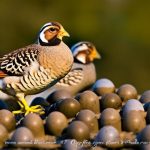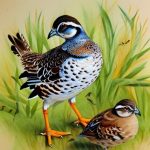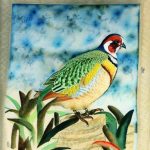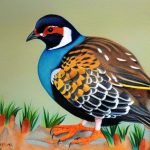Bobwhite quail breeding is a fascinating and rewarding endeavor for many bird enthusiasts. These small, ground-dwelling birds are known for their distinctive call and are popular game birds in many parts of the world. Breeding bobwhite quail can be a fulfilling hobby, as well as a potential source of income for those interested in selling birds or their eggs.
Breeding bobwhite quail requires careful planning, attention to detail, and a deep understanding of the birds’ behavior and needs. From selecting the right breeding stock to creating the ideal breeding environment, there are many factors to consider when embarking on a bobwhite quail breeding program. Understanding the breeding process, caring for chicks, and overcoming common challenges are also essential aspects of successful bobwhite quail breeding. In this article, we will explore each of these topics in depth, providing valuable insights and tips for anyone interested in breeding bobwhite quail.
Key Takeaways
- Bobwhite quail breeding requires careful selection of breeding stock to ensure healthy and productive offspring.
- Creating the ideal breeding environment involves providing adequate space, proper nutrition, and suitable nesting areas for the quail.
- Understanding the breeding process is essential for successful breeding, including knowing the mating behaviors and egg incubation requirements.
- Caring for bobwhite quail chicks involves providing warmth, proper nutrition, and protection from predators.
- Common challenges in bobwhite quail breeding include disease, predation, and maintaining optimal breeding conditions.
- Tips for successful bobwhite quail breeding include regular health checks, proper record-keeping, and seeking advice from experienced breeders.
Selecting the Right Breeding Stock
Selecting the right breeding stock is crucial for the success of any bobwhite quail breeding program. When choosing birds for breeding, it is important to look for individuals that are healthy, strong, and free from genetic defects. Selecting birds with desirable traits such as good size, strong legs, and a vibrant plumage can help improve the overall quality of the offspring.
It is also important to consider the birds’ temperament when selecting breeding stock. Aggressive or overly skittish birds may not be ideal for breeding, as they can pass on these traits to their offspring. Additionally, it is recommended to avoid inbreeding by introducing new bloodlines into the breeding stock periodically to maintain genetic diversity and prevent the accumulation of undesirable traits.
When selecting breeding stock, it is essential to pay attention to the birds’ history and lineage. Choosing birds from reputable breeders with a track record of producing healthy and high-quality offspring can increase the likelihood of success in the breeding program. By carefully selecting the right breeding stock, breeders can lay a solid foundation for a successful bobwhite quail breeding program.
Creating the Ideal Breeding Environment
Creating the ideal breeding environment is essential for the health and well-being of bobwhite quail and the success of the breeding program. The breeding environment should mimic the birds’ natural habitat as closely as possible, providing them with ample space to move around, dust bathe, and nest.
A well-designed breeding enclosure should include plenty of vegetation for cover, as well as areas for the birds to forage and explore. Providing natural perches and hiding spots can help reduce stress and encourage natural behaviors in the birds. Additionally, it is important to ensure that the breeding environment is secure and predator-proof to protect the birds from potential threats.
The breeding environment should also include suitable nesting sites for the birds to lay their eggs. Providing nesting boxes or shelters with soft bedding material can encourage the birds to lay their eggs in a safe and comfortable environment. It is important to regularly inspect and clean the nesting areas to ensure optimal hygiene and egg viability.
Maintaining a clean and well-maintained breeding environment is essential for the health and productivity of the birds. Regular cleaning, proper ventilation, and access to fresh water and nutritious feed are all crucial aspects of creating an ideal breeding environment for bobwhite quail.
Understanding the Breeding Process
Understanding the breeding process is essential for successful bobwhite quail breeding. Bobwhite quail are known for their monogamous mating behavior, with pairs forming strong bonds during the breeding season. Breeding typically occurs in the spring and summer months when daylight hours are longer, triggering hormonal changes in the birds.
During the breeding season, male bobwhite quail will often perform elaborate courtship displays to attract females. These displays may include vocalizations, puffing up their feathers, and performing intricate dances to impress potential mates. Once a pair has formed, they will typically mate and begin the process of building a nest and laying eggs.
Female bobwhite quail are responsible for building the nest and incubating the eggs, while males will often stand guard and defend the nesting area. Bobwhite quail typically lay small, speckled eggs that require an incubation period of around 23-24 days. It is important to provide the nesting pair with privacy and minimal disturbance during this time to ensure successful incubation and hatching.
After hatching, both parents will take an active role in caring for the chicks, providing them with food and protection until they are old enough to fend for themselves. Understanding the natural breeding behaviors of bobwhite quail can help breeders provide the necessary support and care to ensure a successful breeding season.
Caring for Bobwhite Quail Chicks
Caring for bobwhite quail chicks requires careful attention and dedication to ensure their health and well-being. Newly hatched chicks are fragile and vulnerable, requiring a warm and secure environment to thrive. Providing a brooder with a heat source, such as a heat lamp or heating pad, is essential for keeping chicks warm during their early days.
Chicks should be provided with access to clean water and a high-quality starter feed specifically formulated for game bird chicks. It is important to monitor their growth and development closely, making adjustments to their diet and environment as needed to support their health and vitality.
As chicks grow, they will begin to develop their feathers and exhibit natural behaviors such as scratching and dust bathing. Providing them with ample space to move around and explore can help promote healthy development and encourage natural behaviors in the birds.
It is important to handle chicks gently and minimize stress during handling to ensure their well-being. Regular health checks and observation can help identify any potential issues early on, allowing for prompt intervention if needed.
Caring for bobwhite quail chicks requires patience, attention to detail, and a deep understanding of their needs at each stage of development. By providing proper care and support, breeders can help ensure that bobwhite quail chicks grow into healthy and thriving adults.
Common Challenges in Bobwhite Quail Breeding
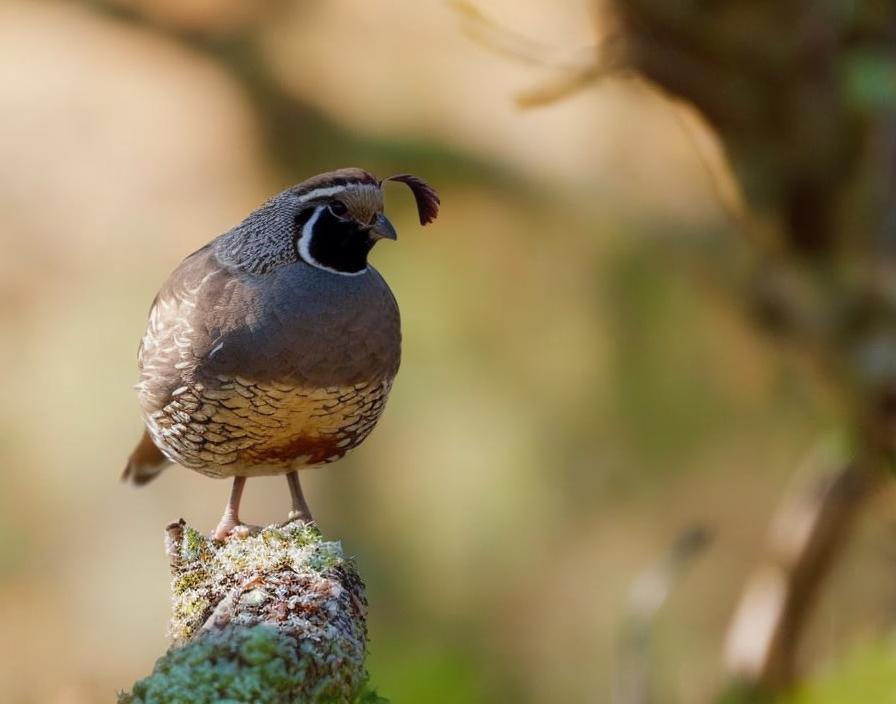
While bobwhite quail breeding can be a rewarding endeavor, it is not without its challenges. Breeders may encounter various obstacles that can impact the success of their breeding program. Common challenges in bobwhite quail breeding include issues such as infertility, low hatch rates, disease outbreaks, and predation.
Infertility can be a significant challenge in bobwhite quail breeding, leading to low egg production and reduced reproductive success. Factors such as age, genetics, nutrition, and environmental stressors can all contribute to infertility in bobwhite quail. Addressing these factors through proper management practices and veterinary care can help improve fertility rates in the breeding stock.
Low hatch rates can also pose a challenge for bobwhite quail breeders. Factors such as improper incubation conditions, poor egg handling, or genetic issues can all contribute to low hatch rates. Monitoring incubation conditions closely, handling eggs with care, and selecting high-quality breeding stock can help improve hatch rates in bobwhite quail breeding programs.
Disease outbreaks can have devastating effects on bobwhite quail populations, leading to illness, mortality, and reduced productivity. Implementing biosecurity measures, regular health checks, and vaccination protocols can help prevent disease outbreaks and protect the health of the birds.
Predation is another common challenge in bobwhite quail breeding, as these ground-dwelling birds are vulnerable to predators such as snakes, raccoons, and birds of prey. Implementing predator-proof enclosures, providing secure nesting sites, and monitoring for signs of predation can help reduce the risk of predation in bobwhite quail breeding programs.
By being aware of these common challenges and implementing proactive management strategies, breeders can mitigate potential risks and improve the overall success of their bobwhite quail breeding program.
Tips for Successful Bobwhite Quail Breeding
Successfully breeding bobwhite quail requires careful planning, attention to detail, and a deep understanding of the birds’ behavior and needs. To improve the likelihood of success in bobwhite quail breeding programs, consider implementing the following tips:
1. Select high-quality breeding stock: Choose healthy, strong birds with desirable traits to lay a solid foundation for your breeding program.
2. Create an ideal breeding environment: Mimic the birds’ natural habitat by providing ample space, vegetation cover, nesting sites, and secure enclosures.
3. Understand the breeding process: Familiarize yourself with the natural mating behaviors of bobwhite quail to provide appropriate support during the breeding season.
4. Care for chicks: Provide a warm brooder, high-quality feed, clean water, and ample space for chicks to grow and develop.
5. Address common challenges: Monitor fertility rates, hatch rates, disease outbreaks, and predation risks closely to mitigate potential challenges in your breeding program.
6. Seek professional advice: Consult with experienced breeders or avian veterinarians for guidance on best practices for bobwhite quail breeding.
By following these tips and remaining dedicated to providing optimal care and support for your bobwhite quail breeding program, you can increase the likelihood of success and enjoy the rewards of raising these fascinating birds.
If you’re interested in bobwhite quail breeding, you may also want to explore the topic of converting a shed to a chicken coop. This article from Poultry Wizard provides valuable insights into the process of transforming a shed into a functional and comfortable space for your chickens. Understanding the principles of coop design and maintenance can be beneficial for anyone looking to create an optimal environment for their poultry. Check out the article here.
FAQs
What is bobwhite quail breeding?
Bobwhite quail breeding refers to the process of raising and breeding bobwhite quail for various purposes such as hunting, conservation, or meat production.
What are the basic requirements for bobwhite quail breeding?
Basic requirements for bobwhite quail breeding include suitable housing, proper nutrition, access to clean water, and a suitable breeding environment.
What is the breeding season for bobwhite quail?
The breeding season for bobwhite quail typically occurs in the spring and summer months, with peak breeding activity occurring in late spring and early summer.
How do you select breeding stock for bobwhite quail breeding?
When selecting breeding stock for bobwhite quail breeding, it is important to choose birds that are healthy, have good genetic traits, and are of breeding age.
What are some common breeding challenges for bobwhite quail?
Common breeding challenges for bobwhite quail include low fertility rates, egg production issues, and proper incubation and hatching of eggs.
What are some best practices for bobwhite quail breeding?
Best practices for bobwhite quail breeding include providing a balanced diet, maintaining proper housing and environmental conditions, and monitoring the health and behavior of the birds regularly.
Meet Walter, the feathered-friend fanatic of Florida! Nestled in the sunshine state, Walter struts through life with his feathered companions, clucking his way to happiness. With a coop that’s fancier than a five-star hotel, he’s the Don Juan of the chicken world. When he’s not teaching his hens to do the cha-cha, you’ll find him in a heated debate with his prized rooster, Sir Clucks-a-Lot. Walter’s poultry passion is no yolk; he’s the sunny-side-up guy you never knew you needed in your flock of friends!


